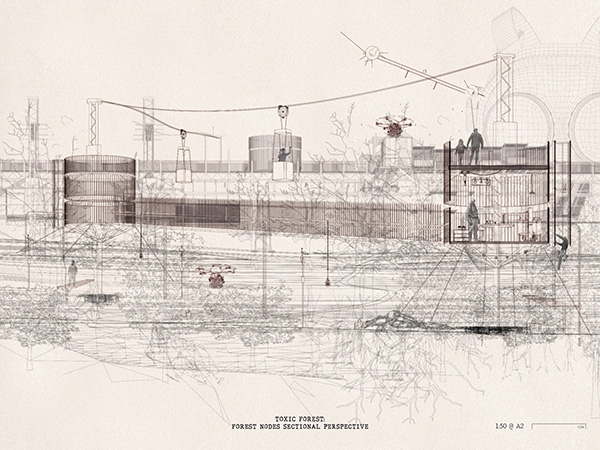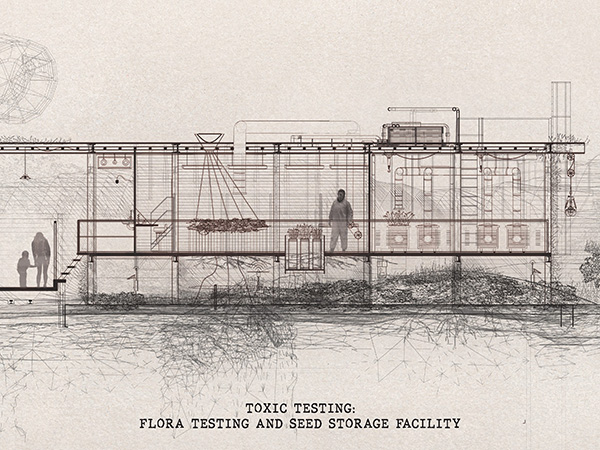Kate Donaldson is a recent graduate of the Master of Architecture program at the University of Melbourne passionate about the potential for architecture and design to navigate sensitive, layered environments and in drawing connections between place, nature, and discipline.
Donaldson's thesis project, ‘Strange Encounters’, manifests her consideration for the complex, forgotten and ‘in between’ built fabrics of our urban environment while her work throughout her studies has been repeatedly recognized as some of the top work from her cohort.
Donaldson has been exhibited as part of Melbourne Design Week 2022 and is also interested in the intersection between architecture, media, and design pedagogy, which she has explored through editorial roles with the AIA Award winning Melbourne School of Design’s Inflection Journal and as a freelance contributor for The Local Project.

Kate Donaldson
The Project:
REVEALING THE ACCIDENT OF THE MARIBYRNONG DEFENCE SITE AND EXPLOSIVES FACTORY
This project is one of ‘unconcealing’, of bringing visible and invisible tensions to the surface by choreographing anxious architectural encounters with contested histories and the ignored ecological catastrophes of big science.
The Maribyrnong Defence Site is a 128-hectare, disused defence facility nestled within the suburbs of West Melbourne. It is a site that bears the visible and invisible scars of weaponisation through its extensive contamination and now two decades long abandonment by the Department of Defence.
Strange Encounters draws upon the notion that learning from these tensions must start at the actual places and spaces of physical confrontation and therefore attempts to create precarious collisions, tense entanglements, and a fused awareness for the environmental consequences of a defensive program right in our backyard.
This is achieved through a series of 6 interventions or stops along a journey across a connected network of raised ‘clean ways’ which bring together a leisure seeking public with discrete, localized geotechnical and material research. Each intervention references lost or remnant site conditions while fostering new, democratised encounters with the existing landscape. Where built acts used to codify exclusion and secrecy, in this thesis they become collective portals and frames through which to encounter this forbidden wonderland.
The field condition should be read as distinct but connected parts that respond directly to the very different zones of the facility through which you are passing. If we can find new ways to approach the interdictory and repellent spaces around us, maybe their fates will change, and we can be shaken awake from apathy towards an affecting strange encounter.
Drawings:
Image 1: In the final stop on the journey, focus is shifted to the river and site of a former bridge. Previous buildings in this area were used for ‘storage awaiting destruction’, but in direct subversion of this, it is now ‘storage awaiting revival’ through an introduced material waste collection facility.

Image 2: From the place of arrival, the raised rotunda is itself a machine, as if it’s been put together by parts from across the site and could be dismantled at any time, stimulating consciousness for where you are in this cautionary theme park.

Image 3: In 2018, a fire tore through some of the oldest laboratories on the site. Today the remains are filled with rubble and debris, but by utilising a tensegrity structural system, a testing facility can be suspended within these precarious walls.

Image 4: At the former propellant production section, instead of resurfacing echoes of the demolished buildings’ form, the process itself has been reified and repositioned as a toxic testing and germination workshop.


